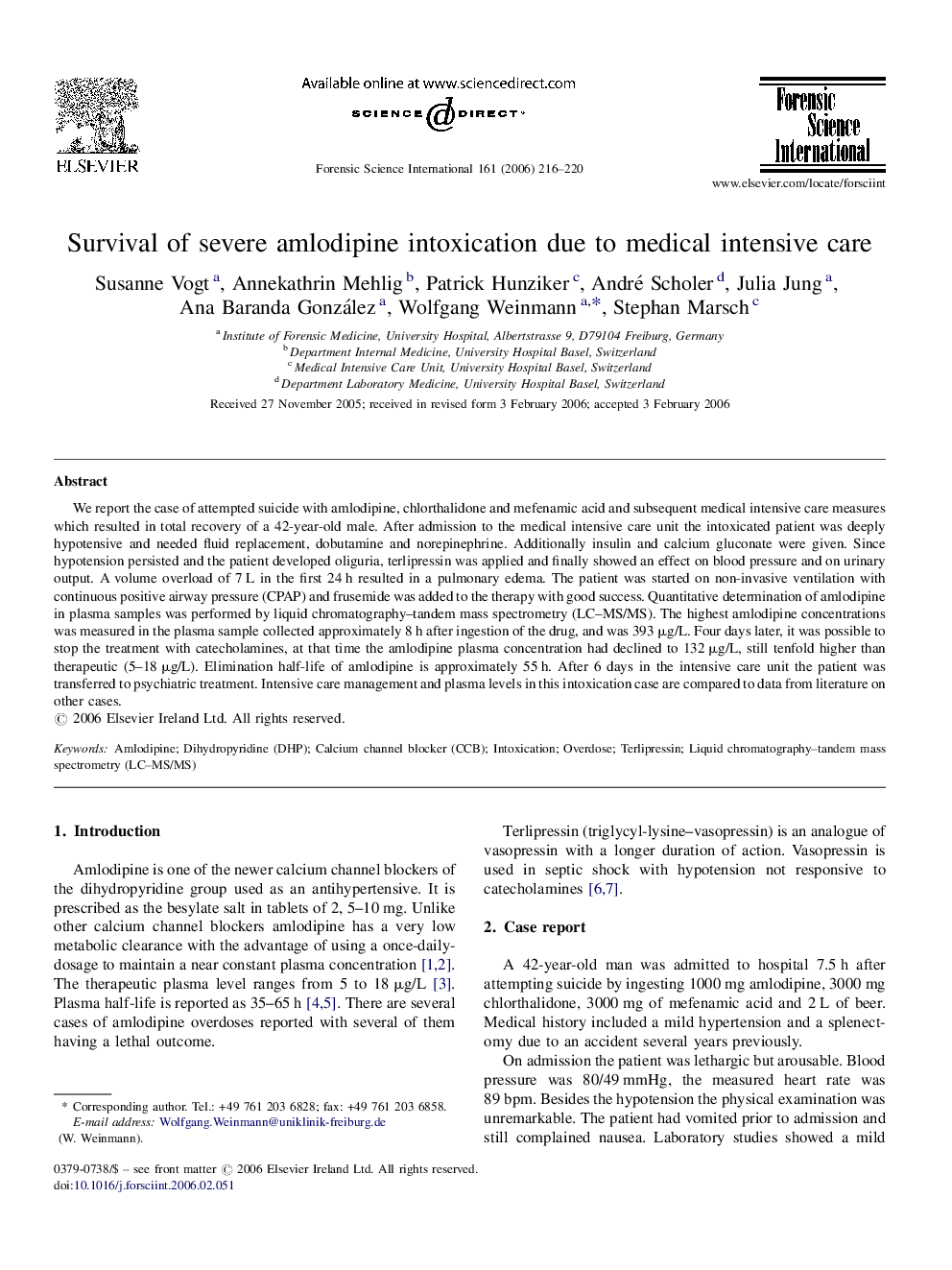| Article ID | Journal | Published Year | Pages | File Type |
|---|---|---|---|---|
| 98005 | Forensic Science International | 2006 | 5 Pages |
We report the case of attempted suicide with amlodipine, chlorthalidone and mefenamic acid and subsequent medical intensive care measures which resulted in total recovery of a 42-year-old male. After admission to the medical intensive care unit the intoxicated patient was deeply hypotensive and needed fluid replacement, dobutamine and norepinephrine. Additionally insulin and calcium gluconate were given. Since hypotension persisted and the patient developed oliguria, terlipressin was applied and finally showed an effect on blood pressure and on urinary output. A volume overload of 7 L in the first 24 h resulted in a pulmonary edema. The patient was started on non-invasive ventilation with continuous positive airway pressure (CPAP) and frusemide was added to the therapy with good success. Quantitative determination of amlodipine in plasma samples was performed by liquid chromatography–tandem mass spectrometry (LC–MS/MS). The highest amlodipine concentrations was measured in the plasma sample collected approximately 8 h after ingestion of the drug, and was 393 μg/L. Four days later, it was possible to stop the treatment with catecholamines, at that time the amlodipine plasma concentration had declined to 132 μg/L, still tenfold higher than therapeutic (5–18 μg/L). Elimination half-life of amlodipine is approximately 55 h. After 6 days in the intensive care unit the patient was transferred to psychiatric treatment. Intensive care management and plasma levels in this intoxication case are compared to data from literature on other cases.
